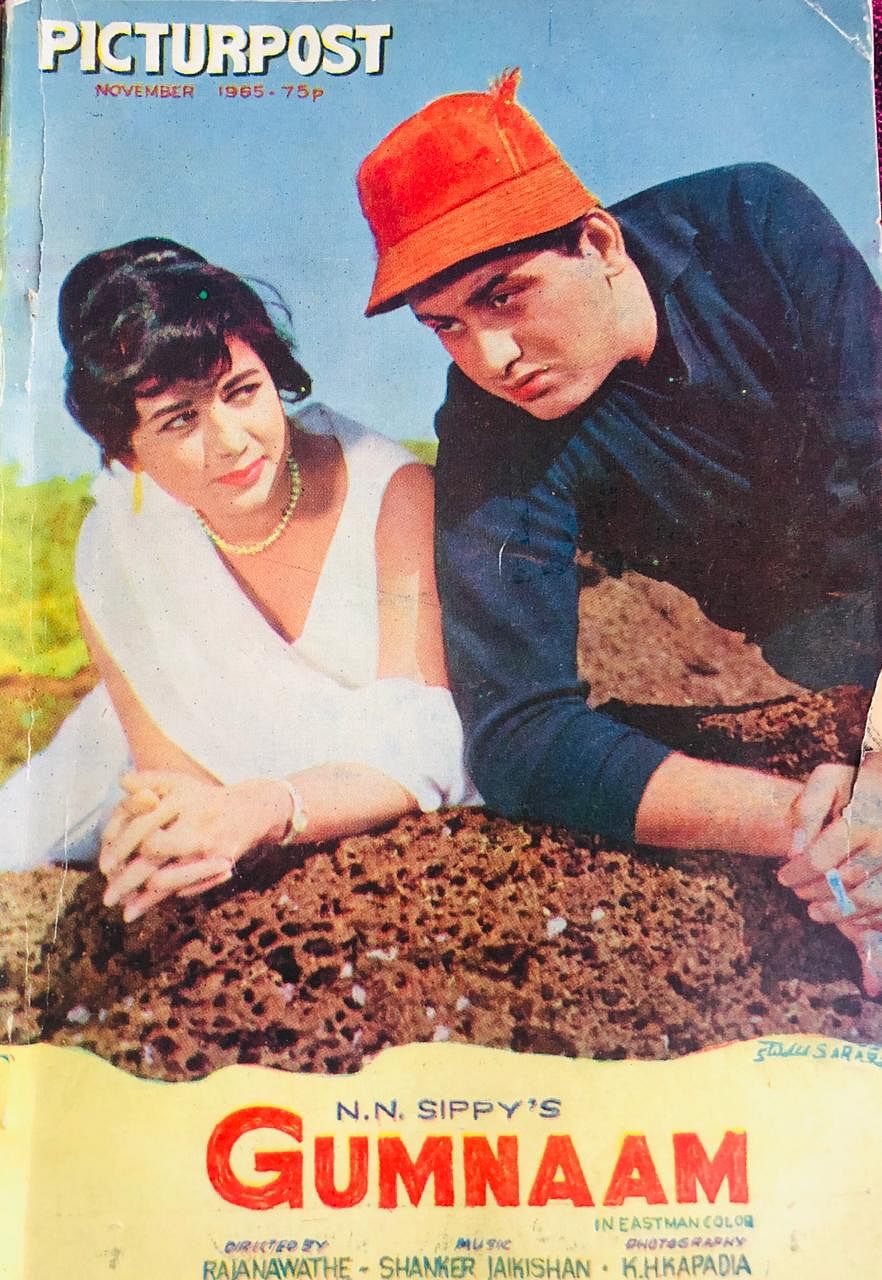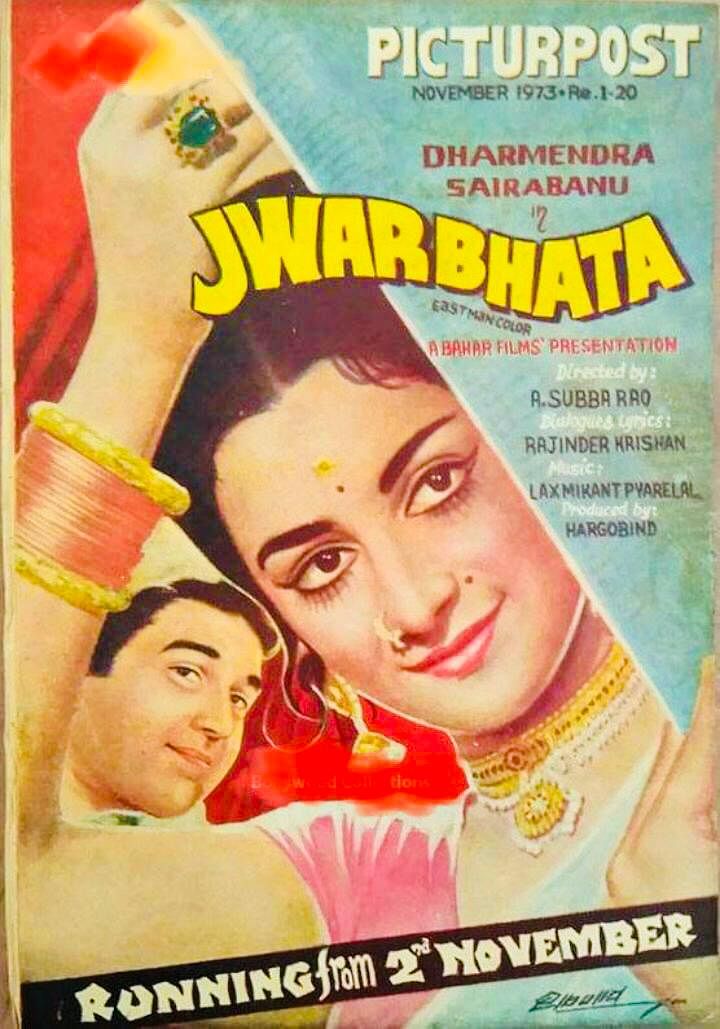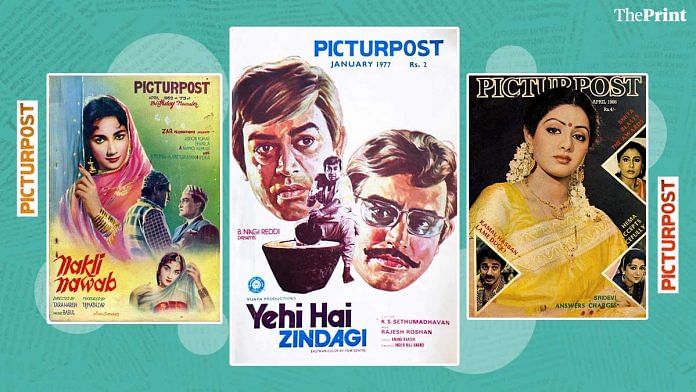Back in the day when smartphones and tablets didn’t exist and newspapers and magazines were what the average commuter relied on to pass the time, pocket-sized film magazine Picturpost was their best friend.
Launched sometime in the 1940s, the monthly magazine, published from Madras, was easier to carry around and read on public transport than Filmfare or CineBlitz. The latter were quite large and thick, averaging 100-130 pages per edition while Picturpost was much smaller in size and typically consisted of about 50 pages.
While its sister concern, Pesum Padam, extensively covered Tamil cinema, Picturpost focused on Hindi movies. “One could find an article or two covering films or stars from the South too, but the focus was on Hindi cinema,” says Dhruv Somani, a textile industrialist and film memorabilia collector who has also written a four-volume series on horror in Hindi cinema, called A Touch of Evil.
Also read: Cricket Samrat, the magazine that religiously spread the gospel of cricket for 42 years
A collector’s item
Today, an edition of Picturpost is more valuable than Filmfare or some of the others, because of how difficult it is to find. “It’s a very rare magazine, so people who are in possession of it don’t even post pictures online in fear that they’d be copy-pasted,” Somani explains. “If you want to buy a Filmfare edition from the ’70s, it would cost you about Rs 700, while a Picturpost from the same time would be somewhere around Rs 1,200-1,500.”
It was known for covering upcoming releases while going into granular details about a film’s cast and plot. Many of its covers were actual movie posters, which make it a prized possession for film enthusiasts these days.
While Somani is a proud owner of a 1965 edition that he had been hunting down for quite some time for the poster of Gumnaam (1965), starring Manoj Kumar, on its cover, some of its other sought-after covers were the one featuring a young Govinda, the poster of Dharmendra and Saira Banu’s Jwaar Bhata (1973) and one of Rajesh Khanna and Sharmila Tagore’s Safar (1970).

Also read: Bharat Ek Khoj: Shyam Benegal’s adaption of Nehru’s Discovery of India was a Sunday staple
Detailed reviews, quality pictures
Picturpost was neither as controversial as Baburao Patel’s FilmIndia nor as glamorous as Filmfare; its sober tone and attention to detail was what made it such a favourite. Somani reminisces that this was a magazine that gave you in-depth information on cinema happenings sans the gossip that many Bollywood magazines are notorious for.
While competitors Filmfare and CineBlitz used glossy paper and glossed-up photographs, Picturpost‘s photographs have a slight matte finish to them, which makes them even more desirable. “The images were top class in quality and were the USP of the magazine,” Sumant Batra, founder of Cinemaazi, a digital repository of Indian cinema, tells ThePrint.

The magazine was also popular for how it platformed cinema’s rising stars and newcomers. Film critic Ulhas Shirke wrote that one of its editors was film historian Firoze Rangoonwala, whose policy was to carry an interview of a newcomer and an established star in every edition. While not many publications were keen to give space to newbies, Picturpost was an exception, he wrote.
With time Picturpost also changed, in that while one could find political commentary in its initial years up to about the ’60s, the magazine dropped political commentary to exclusively cover Bollywood and all things cinema, notes Somani. “Its later editions were also bigger in size and towards its end, the magazine wasn’t the size of your typical Reader’s Digest anymore,” Somani says.
The magazine shut down in 1988, but its gorgeous posters and photographs, and it’s in-depth analysis of the movies, remains with readers to this day.
Also read: Chandrakanta, the show in which Irrfan won hearts four lines at a time






